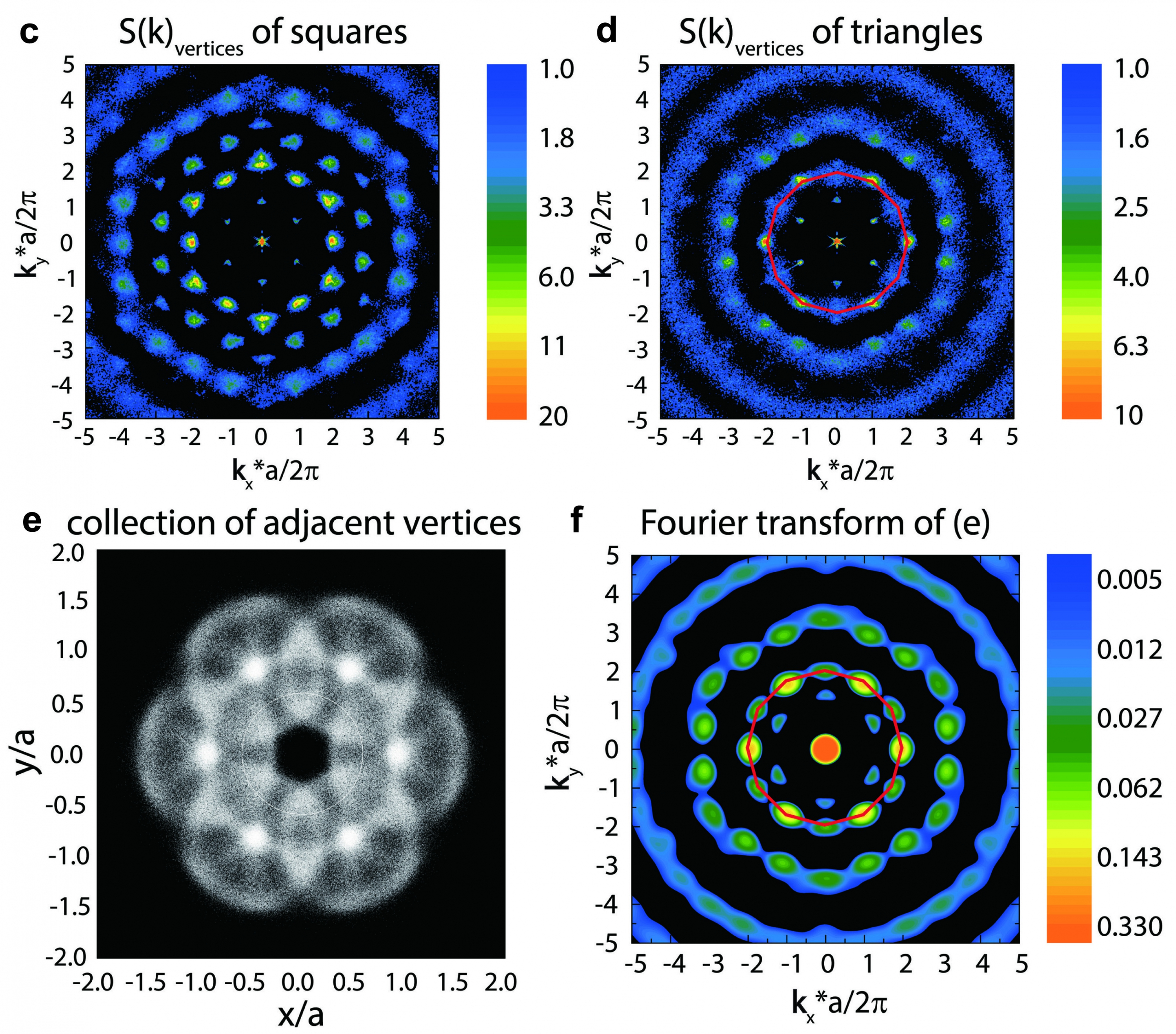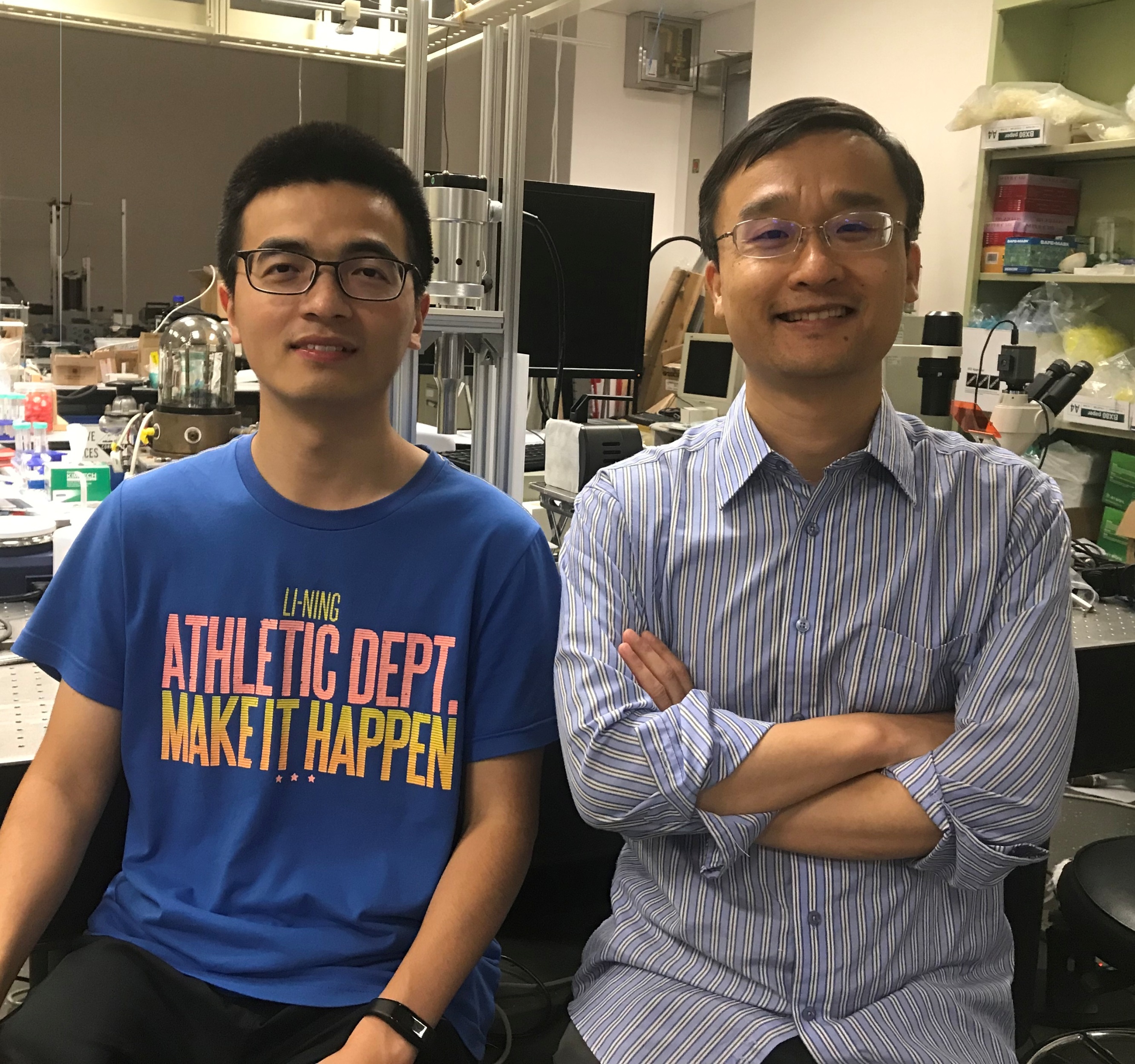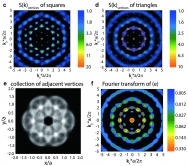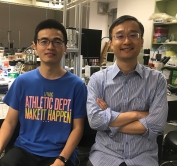CUHK
News Centre
New Pattern-forming Paradigm Found by CUHK Researchers Shedding New Lights on Structure Formation, Self-assembly and Packing
Professor Lei XU, professor and Dr. Hongchuan SHEN, post-doctoral fellow, from the Department of Physics, The Chinese University of Hong Kong (CUHK), have collaborated with scientists from mainland China and Japan to reveal a fundamentally new pattern-forming paradigm, in which particle shape plays little role in the static structure but determines the relaxation dynamics. Their findings shed new light on diverse problems involving structure formation, self-assembly and packing and also provide a strong basis for designing new materials and regulating their rigidity and plasticity in the future. The research results have been recently published in the prestigious scientific journal Nature Communications.
The New Finding Breaks the Traditional “Common Sense”
How to fill up space with identical building blocks is an important question fundamental to realizing desired solid structures in condensed matter physics, achieving novel self-assembly structures in materials science, and even understanding the formation of complex living colonies and assemblies in biological research.
Most of the previous studies using building blocks with short-range interactions have demonstrated that when the building blocks change their shapes, the system structures will vary correspondingly, with no universal state for different shapes. Professor Xu and his team find such “common sense” breaks down when particle interactions become long range. They uncover a universal state — the hexagonal plastic crystal — for various polygonal systems across a broad density range. This state exists for hexagons, pentagons, squares and triangles, demonstrating robust shape independency in the long-range interaction regime.
New Relaxation Mechanism Controlled by Particle Shape is Uncovered
Although making little impact on the static structure, the team shows the particle shape strongly influences the dynamic relaxations: under external perturbations different polygons relax distinctively. It relies predominantly on the “internal roughness” produced by polygon shapes, which is revealed for the first time. In particular, a novel relaxation mechanism via defect loop, which typically appears in quasicrystals, surprisingly occurs in their crystal structure of triangles.
Impact and Possible Applications of the Discovery
The research may provide a fundamental picture for the relaxation of plastic crystals, which widely appears in square ice and spin-frustrated lattices. It could even extend to more disordered systems such as the novel material of metallic glasses, and help to explain their high rigidity and low plasticity. Professor Xu said, “Because of the very large internal roughness throughout the metallic glass, the internal structures are essentially locked in space and very difficult to move and relax. Our research may help to explain why disordered metallic glasses can achieve higher rigidity and lower plasticity than their crystalline counterparts. It also provides a strong basis for designing new materials and regulating their rigidity and plasticity in the future.”
Supported by the Research Grants Council of Hong Kong, the National Natural Science Foundation of China Grants, and Shanghai Rising Star Programme Grants, this research was mainly carried out by Dr. Hongchuan Shen, an outstanding post-doctoral fellow, and jointly supervised by Professor Lei Xu from CUHK and Professor Peng Tan from Fudan University. The researches in Professor Lei Xu’s laboratory focus on Soft Condensed Matter Physics, which studies everyday phenomena such as drop splashing, water freezing and paint drying. The researchers hope to discover new physics and novel materials to improve people’s everyday life through their studies.







